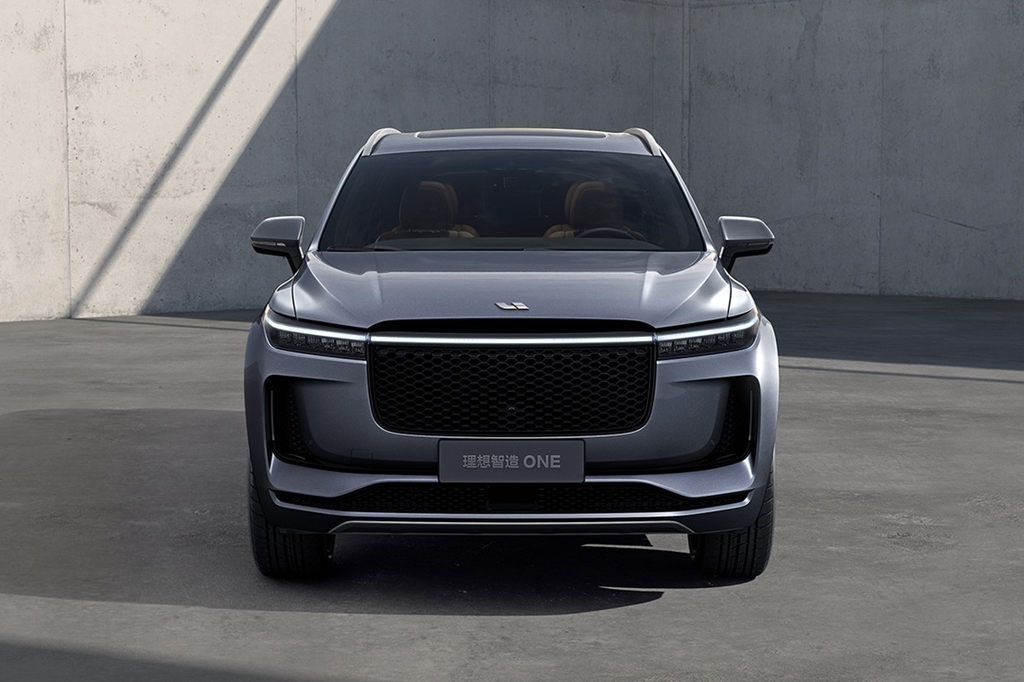After a three-month wait, the Ideal ONE is finally receiving its OTA update. Starting today, version 2.0.41 of the software will be pushed out to all owners in 5 days according to their delivery time.
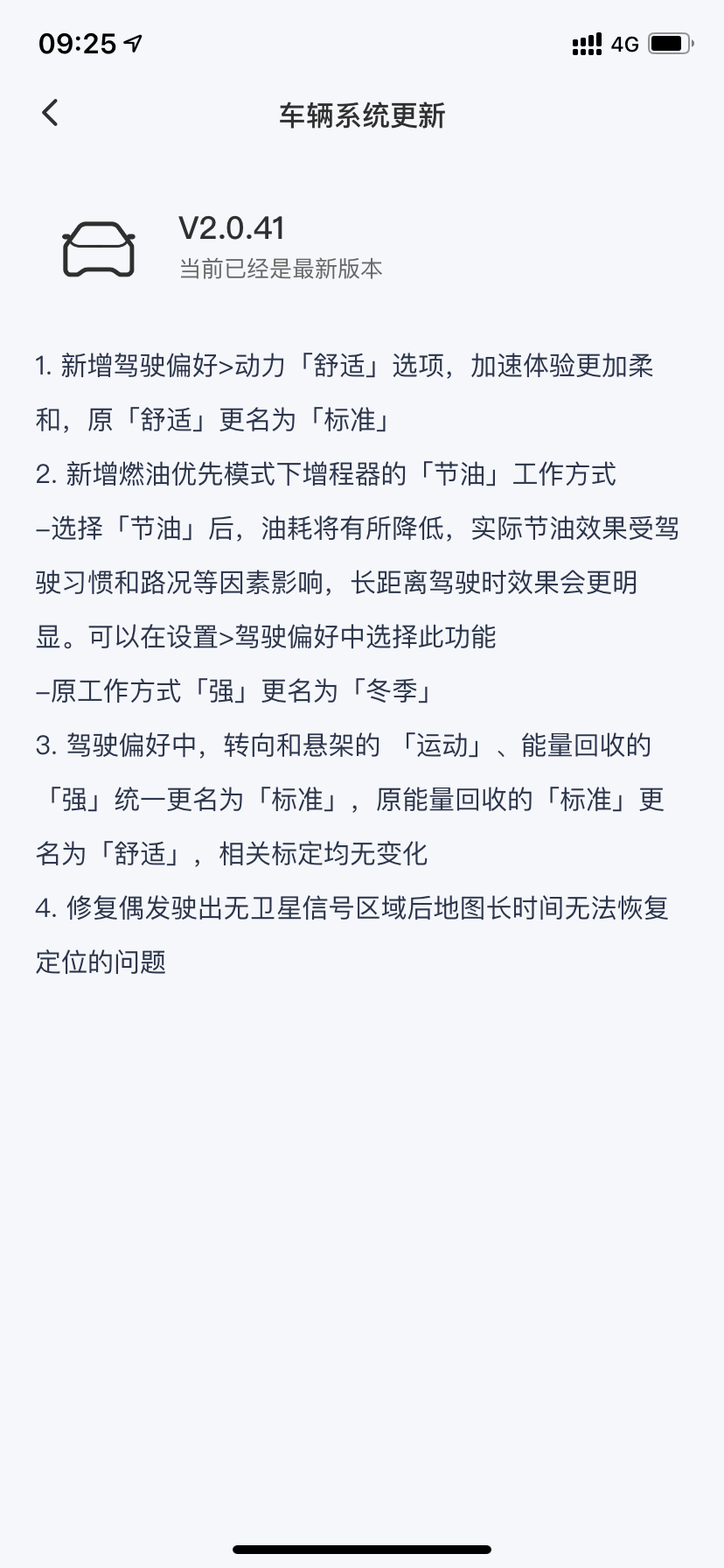
At first glance, many people’s first reaction to this system update introduction might be, “What? This OTA … is mainly just changing a few names?”
From the version number, V2.0.41 belongs to a minor version upgrade under version 2.0. The main focus is still on optimizing the system details, and there won’t be any major functional updates.
However, if an OTA update only changes a few names, not only will the owners not accept it, but the Ideal product managers and engineers will surely feel embarrassed too.
Below, we’ll look at each change one by one to see what other changes there are besides the name changes this time around.
Comfortable Power
In this OTA update, a new “Comfort” option has been added to the driving preference settings, while the original “Comfort” option has been renamed to “Standard.”
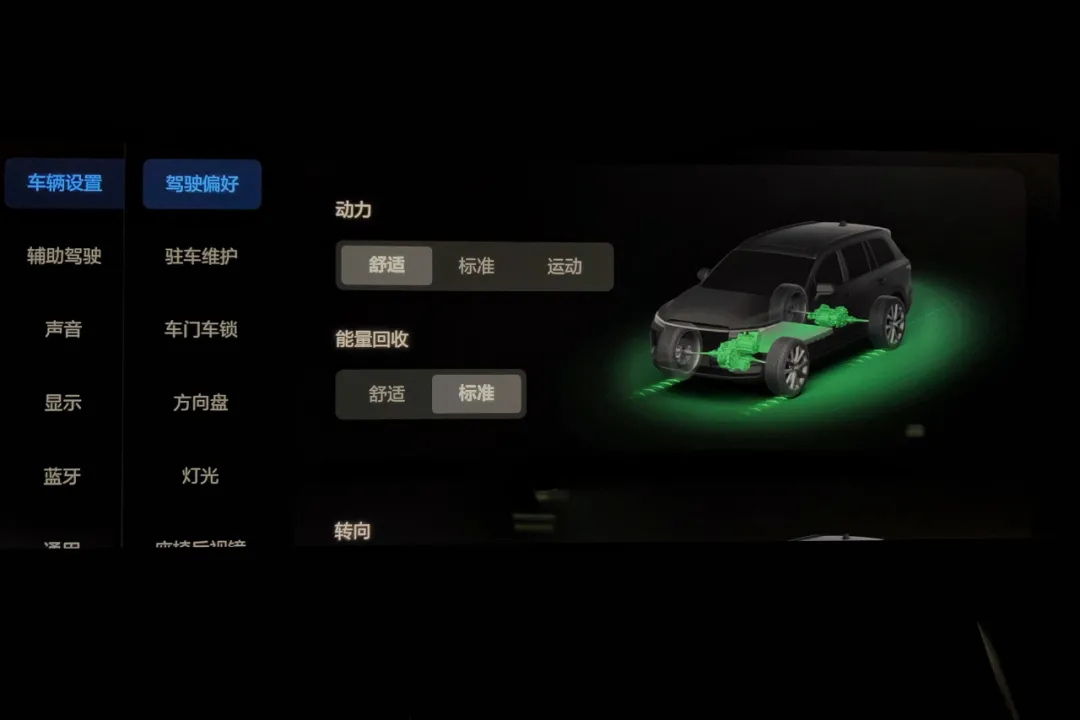
According to Ideal’s official data, the new “Comfort” power has a hundred-kilometer acceleration time of about 9 seconds, while the “Standard” power has a hundred-kilometer acceleration time of about 8 seconds. However, from my personal experience, there is little difference in the feel between these two power modes.
Compared to the “Standard” power, I guess the new “Comfort” power mode has only made minor adjustments to the acceleration curve, such as slightly delaying power response to create a smoother acceleration experience.
After all, even if you slam the throttle to the floor in the original “Comfort” power mode, the overall acceleration feel is relatively gentle. If the new “Comfort” power mode’s acceleration feel were significantly slower, the driver would complain about the lack of power.
But this way, the existence of the “Standard” power mode seems somewhat awkward. The “Standard” power mode feels about the same as “Comfort” power and, according to the official statement, the passenger experience with “Comfort” power is better. Therefore, with “Comfort” power mode being superior, the “Standard” mode seems to have no reason to exist anymore.
So, I think it’s worth considering how to make the “Standard” power mode more “powerful” and create a greater difference in acceleration feel from the new “Comfort” power mode. Otherwise, it might be better to simply do away with the “Standard” power mode.
More Fuel-Efficient
In fuel-saving mode, this update adds an “Eco” mode for the range extender.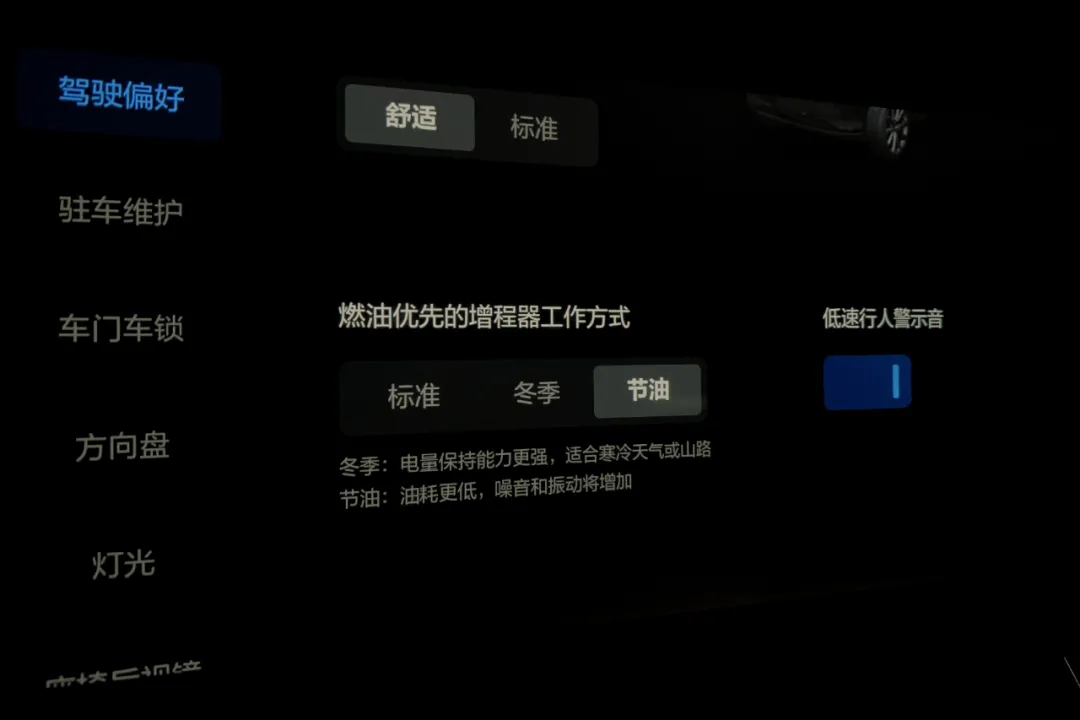
With regard to this feature, many people may have questions about the statement in the feature introduction that “lower fuel consumption will increase noise and vibration”.
The official explanation for this issue is that due to the working characteristics of the range extender, controlling low fuel consumption, noise, and vibration sometimes presents a contradiction, requiring a balancing point. The “fuel-saving” function prioritizes ensuring that the range extender operates within the fuel-saving range and sacrifices some noise and vibration.
In my understanding as a non-professional, the distribution of the range extender’s NVH, battery retention, and fuel consumption capabilities is like the three vertices of a triangle, and if one aspect is especially excellent, it will affect the values of the other two aspects, similar to the attribute graph of a game character.
If the standard mode of fuel priority is the balance of NVH, battery retention, and fuel consumption, then the “fuel-saving” mode is more like a low fuel consumption specialist, while the “winter” mode is a powerhouse of battery retention.
In actual driving, I did not feel much difference between the “standard” mode and the “fuel-saving” mode when driving in urban road conditions (my test conditions: outdoor temperature of 25℃, 65% battery capacity, automatic air conditioning set to 22℃, and music turned off).
On a smooth circular road at a constant speed of 80 km/h, after repeatedly switching between “standard” and “fuel-saving” modes and carefully comparing them, the only difference that could be felt was that the tones of the range extender were different, with the “standard” mode sounding slightly more “muffled”, while the sound of the range extender in the “fuel-saving” mode was relatively more “sharp”.
When driving on a high-speed road, because wind and tire noise are relatively higher, the NVH difference between “fuel-saving” and “standard” modes that can be felt inside the car is even smaller.
Of course, the above are just my personal feelings. Moreover, I did not conduct more comprehensive tests under different conditions such as high and low battery levels, cold and warm temperatures, and long-distance uphill climbing. I don’t know if there are any cases where the NVH experience in “fuel-saving” mode is significantly different from that in “standard” mode.
At the same time, everyone has different levels of sensitivity to noise, and their perception of NVH will also be different, so the experience of the “fuel-saving” mode still depends on one’s own feelings.
Regarding the effect of “fuel-saving”, the official statement is as follows: Under WLTC working conditions, the “fuel-saving” function can reduce fuel consumption by 8%. Of course, the actual fuel-saving effect is affected by driving habits, road conditions, and other factors, and may not be reflected in single-drive energy consumption. Its effect is more effective with long-term use.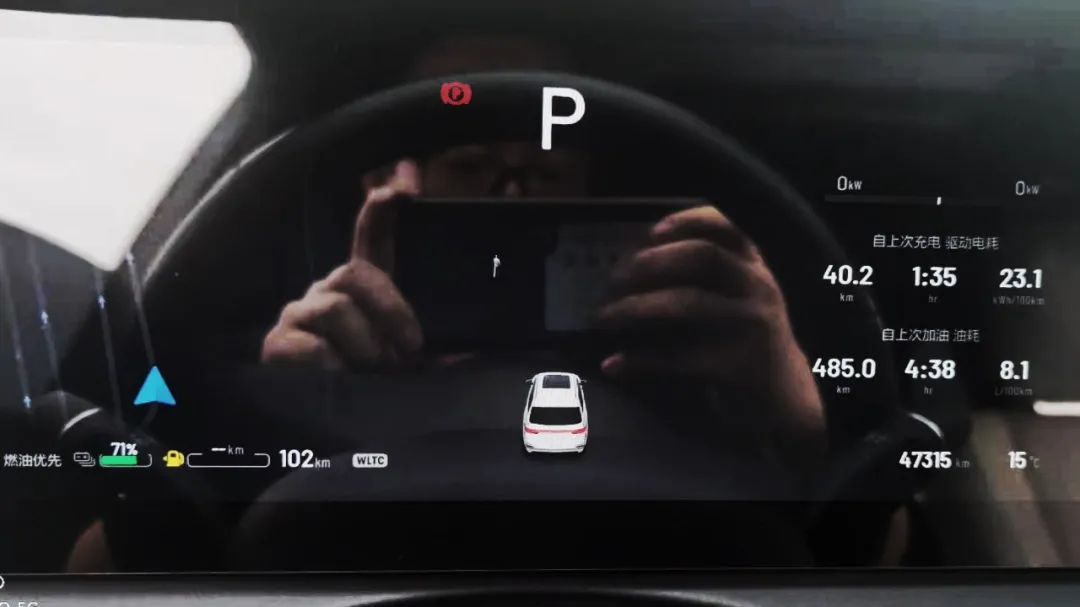
I saw in a WeChat group that a car owner had two sets of highway fuel consumption test data using the “fuel-saving” mode. In the first set of data, the Ideal ONE traveled 485 km on the highway for 4 hours and 38 minutes, and the displayed fuel consumption was 8.1 L/100 km.
Based on this calculation, the average speed of the Ideal ONE reached 104.7 km/h, indicating that the vehicle was almost always driving at the speed limit of 120 km/h.
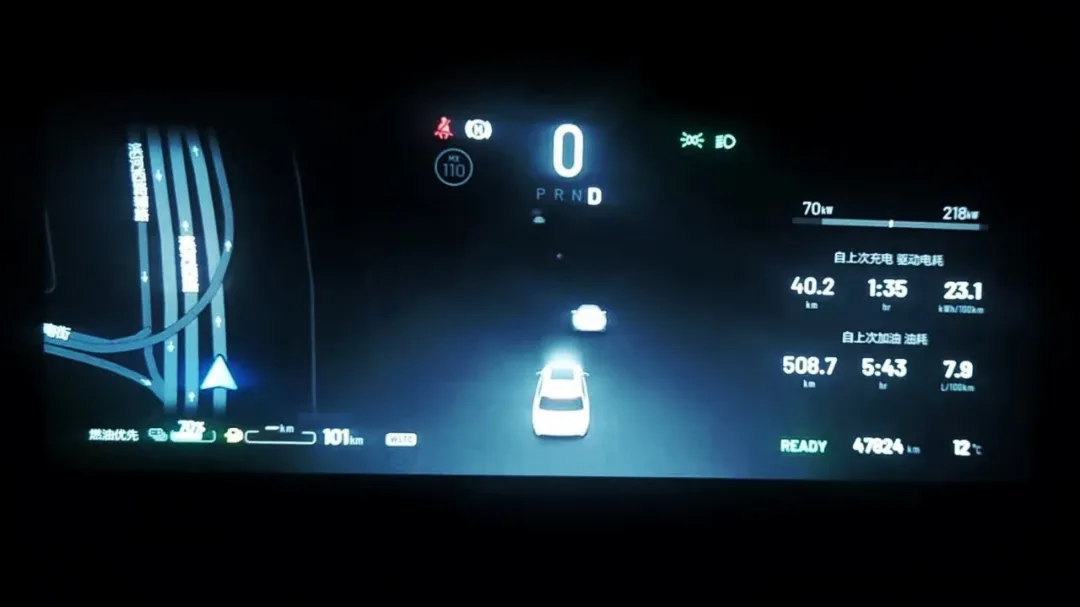
In the second set of data, the Ideal ONE traveled 508.7 km on the highway for 5 hours and 43 minutes, and the displayed fuel consumption was 7.9 L/100 km. Due to a speed limit of 80 km/h on a section of the road, the average speed of the vehicle was 88.9 km/h, which is slightly slower than the data from the first set.
Although these two sets of independent high-speed fuel consumption data cannot accurately calculate the specific fuel saving data of the Ideal ONE in the “fuel-saving” mode.
However, compared to the fuel consumption of about 9 L displayed when the Ideal ONE was driving at a constant speed of 120 km/h before, it can be seen that the high-speed fuel consumption in the “fuel-saving” mode has significantly decreased.
It should be noted that the fuel-saving mode may not show a significant decrease in fuel consumption during short-distance driving, which may be due to the time required for the range extender to reach the appropriate working temperature from the cold engine.
Therefore, based on the current experience, my personal opinion is that the NVH of the “fuel-saving” mode is acceptable, and the long-distance fuel consumption level seems to be good.
Personally, because I have a home charger, I only use gasoline when driving on the highway, so for me, the “fuel-saving” mode is equivalent to the “long-distance” mode.
In addition, I am also curious, since the “fuel-saving” mode can be updated via OTA, can a range extender “seamless” mode be added next time?
About renaming
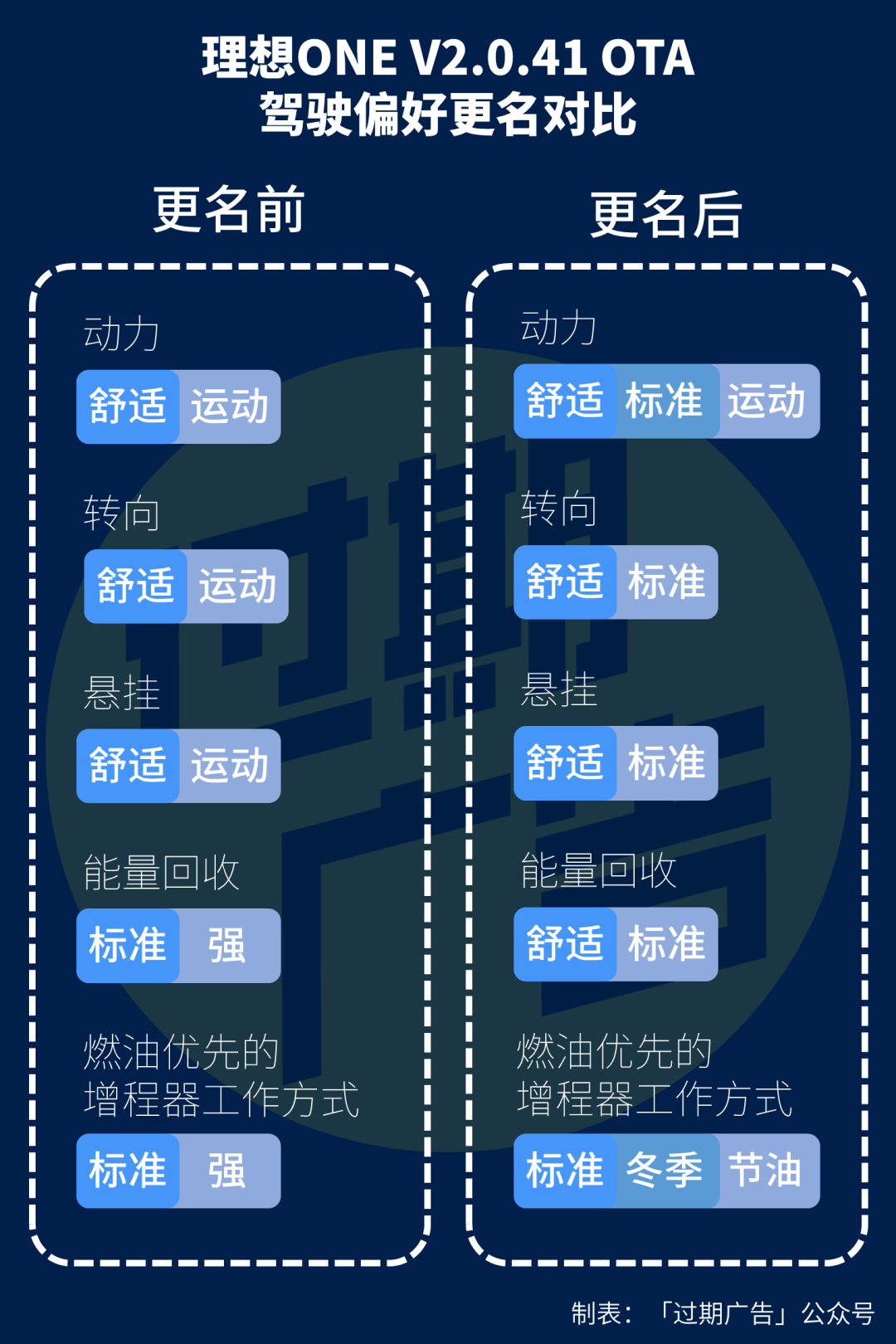
Finally, let’s talk about renaming. I made a comparison table for all the name changes made in this OTA update. As can be seen from the figure, all the name changes are concentrated in the driving preference menu.## Update V2.1
Last Friday, Garage 42 released a survey report covering nearly one thousand owners of Ideal ONE. The report revealed that OTA capability not only has a significant impact on owners’ purchasing decisions, but it has also become an important means of continuously improving user satisfaction.
OTA has become an essential part of Ideal ONE owners’ driving life. For example, intense discussions about OTA can often be seen in owners’ WeChat groups, which shows how much attention they pay to OTA.
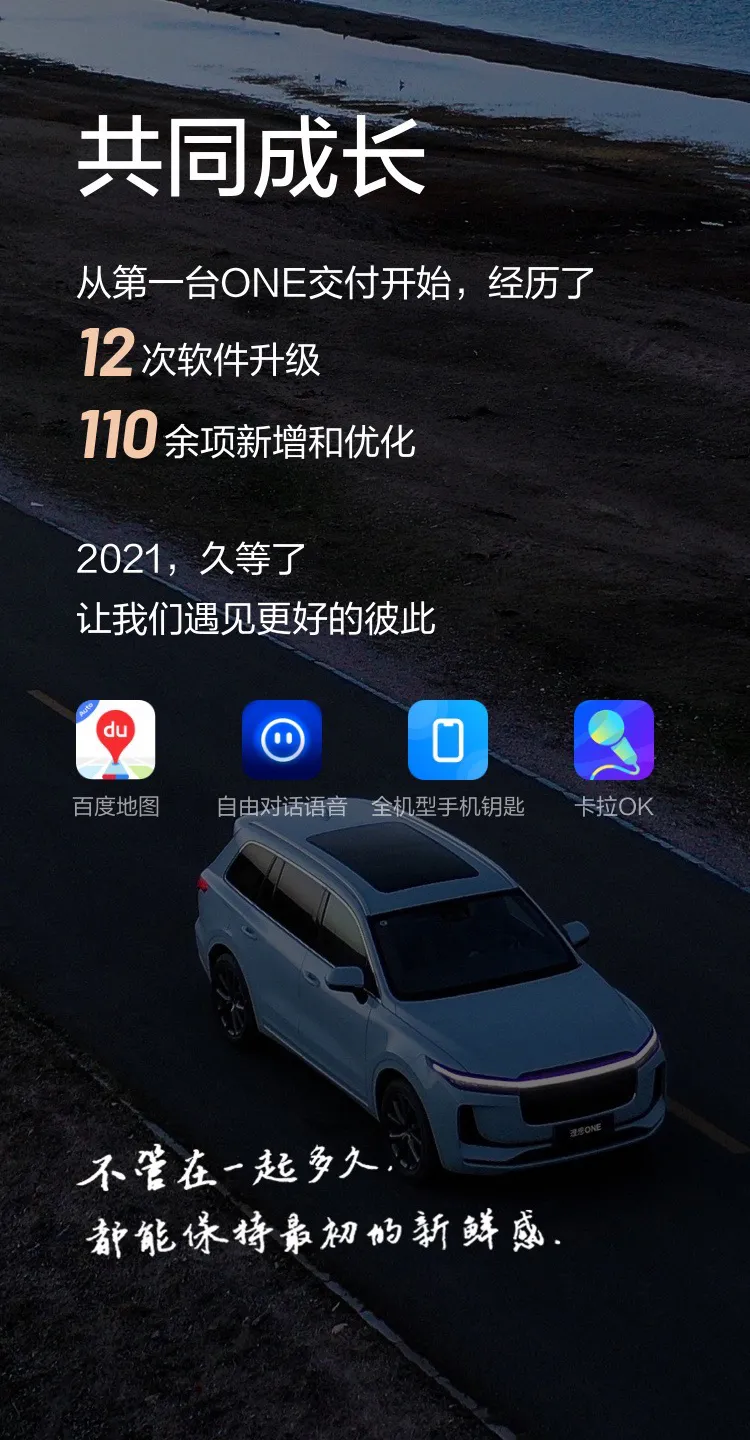
In the Ideal ONE 2020 Annual Driving Report published earlier this year, Ideal Automobile announced that it would update four functions in 2021: Baidu Maps, Free Dialogue Voice, Mobile Key for All Models, and Karaoke OK, besides the Karaoke OK, at least three highly anticipated functions have already been put into the OTA plan, it remains unknown whether any or all of them will be included in OTA 2.1.
In addition, functions that have been highly requested by the owner community, such as remote front and rear entry of narrow parking spaces and optimization of automatic parking, will they have the opportunity to be realized this year?
Finally, may I ask again if the pure electric cruising range and battery power level can be displayed on the instrument screen at the same time?
This article is a translation by ChatGPT of a Chinese report from 42HOW. If you have any questions about it, please email bd@42how.com.
